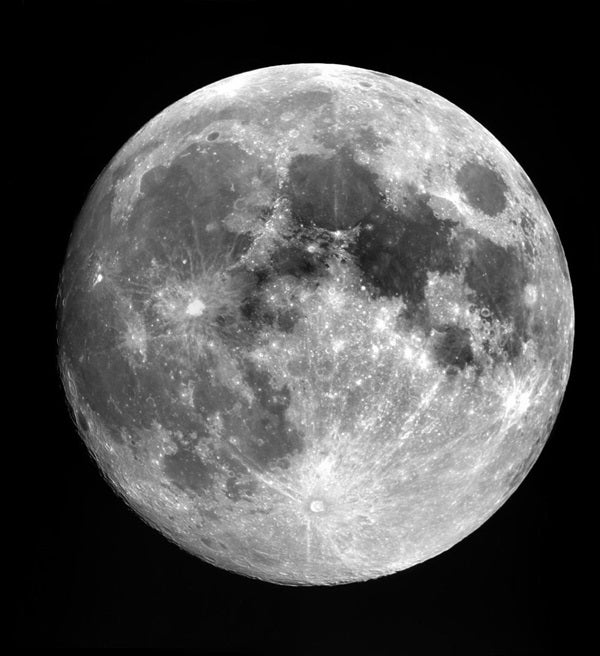At closest, our natural satellite will lie roughly 221,600 miles (356,630 kilometers) from Earth. Compare that to the Moon’s average distance of 238,855 miles (384,800 km) from Earth. This distance difference translates into a late-January Full Moon whose area is nearly 12 percent larger than average.
“Astronomically, there’s nothing special about Friday night’s Moon,” said Astronomy Contributing Editor Raymond Shubinski. “But it does help teach that the Moon’s orbit is elliptical, not circular. Sometimes it’s closer to Earth, and at other times it’s farther away.”
Along with the year’s biggest Full Moon, a special treat awaits skywatchers. In the early evening look for Mars less than 7° north-northeast of the Moon. You won’t have any trouble spotting Mars. The Red Planet will glow with an intense orange-white light, and only Sirius, the brightest of all the nighttime stars, will outshine it. But Sirius is blue-white and lies one-quarter of the way across the sky to the southwest.
Friday night marks the point in the martian orbit known as opposition. It lies opposite the Sun in the sky as we see it from Earth. At opposition — which occurs every 26 months — Mars rises at sunset, climbs highest in the sky at midnight, and sets at sunrise.
Oh, and just so you know, the farthest Full Moon of 2010 will occur August 24, when Luna will lie some 248,500 miles (400,000 km) away.
- Mars 2010 observing: Mars makes best appearance in two years this weekend
- StarDome: Find Mars and the Moon in your night sky with our interactive star chart.
- Astronomy myths: More crimes occur at Full Moon
- Online Reader Gallery: See Moon images and submit your own.
- Sign up for our free weekly e-mail newsletter to stay up to date on more great sky events.











